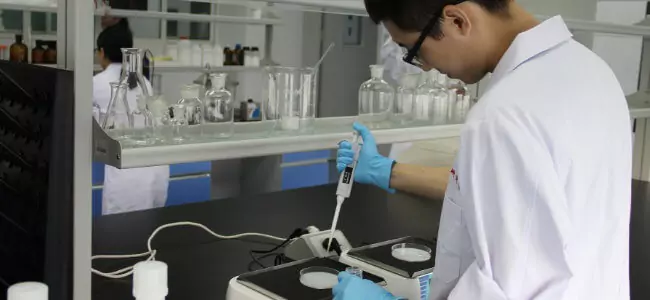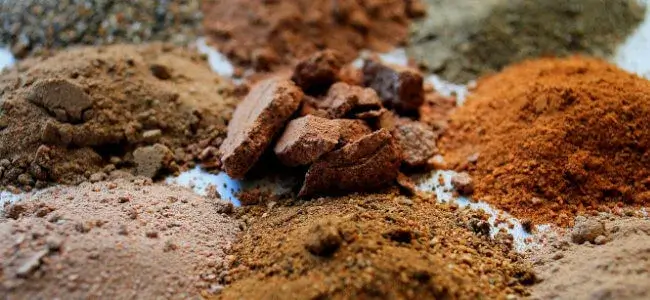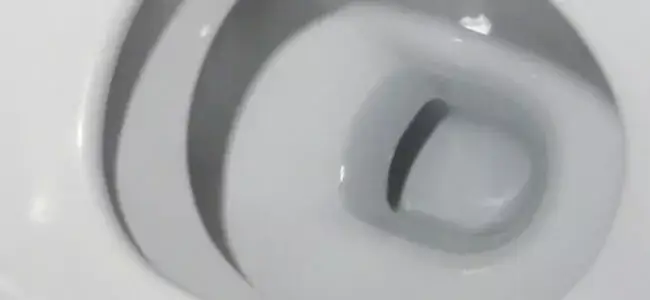How biological septic tank additives are made

TABLE OF CONTENTS
Most bacteria are heterotrophic by nature which means they rely on an organic compound for food and energy. Some strains also need some other nutrients like vitamins in their diets. The making of bacteria, therefore, entails the availing of an appropriate physical environment that is conducive for bacterial growth. The environment must have the right pH, temperature, oxygen and a source of nutrition. Different bacteria have different functions and not every bacterial strain is useful in a septic system. The process of making biological additives entails the manipulation of microbial strains with the aim of improving their technological properties. The main sources of the bacteria strains are plants, soil, and rodents.
Methods of making biological additives
Bacterial strain selection
Bio-Sol uses bacillus strain because of its impressive efficacy in wastewater treatment. In fact, this is the same strain that is used for industrial treatment of wastewater before it is released back into the environment. Bacillus is a facultative anaerobic bacterium that thrives in environments with little or no oxygen. These bacteria also have high flocculation and cohesion which can help improve the process of sludge settlement. These qualities make the strain a perfect choice for septic tank biological additives because you can count on it to help with the anaerobic digestion of organic waste.
The bacterial strain selection method entails the refining and isolating of pure culture as well as the screening of preliminary organisms in order to identify those that have the highest potential. The most optimum strain is then picked and then enhanced even more by exposing it to evolutionary pressures like pH environments and toxic minerals. Through strain selection, several goals are realized including the increase of the density of desirable bacteria which ultimately increases the overall rate of organic waste removal.
But isolating bacillus is like seeking for the proverbial needle in a haystack. For starters, in order to get pure cultures, the singe-colony bacillus is isolated through the streaking of vegetative cultures on nutrient agar plates. Because of the complexity of this process, we usually make use of ready-made strain banks that have bacillus strains already isolated.
Liquid fermentation
Submerged liquid fermentation dates back to the 1930s and is still in use today because of its effectiveness in developing microbially derived enzymes. The substrate that is used for the fermentation process is kept in a liquid state that has the nutrients and that is why it is referred to as submerged liquid fermentation. Liquids used in this procedure include alcohol, oil, yogurt, etc. In order for the liquid fermentation to be effective, you must select the best strain as well as the best substrate.
How to choose the right bacterial strain?
Not all bacterial strains respond the same way in different scenarios and that is why it is important to select the right one. Bacterial species that have successfully been used include Bacillus species, Pseudomonas, Cellulomonas, and Aerobacter. Bacillus species include Bacillus macerans, Bacillus amyloliquefaciens, Bacillus macerans, Bacillus pumilus, Bacillus subtilis and many more. Enzymes that are commonly used in septic tank biological additives include Proteases, Lipases, Amylases, Ureases, Cellulases, and Nitrate Reductase.
Here are some guidelines when selecting the bacterial strain.
- The environment – for best results, you want to choose bacterial strains that work well in the environment you need the bacteria for. Environmental factors worth considering include aerobic and anaerobic conditions as well as the pH.
- The purpose – the purpose of the bacteria you are making will also determine the best strain to go with. The purpose of the bacteria will determine the kinds of enzymes you need to be produced and this will help to inform on the best strain to go with.
- The complexity – in some cases, you may want to combine several strains because you need the bacteria to work in different environments (e.g. anaerobic and aerobic) to achieve distinct results.
How to find the appropriate substrate?
Microbes are ubiquitous in nature, which means they can be obtained from almost any source. This notwithstanding, substrate-rich environments need to be identified in order to make efficient strains. In substrate selection, the efficient strains are isolated as per their affinity for a given substrate. Serial dilution may also be used and this entails the minimization of the numbers of colonies to make selection easier. The techniques are ideal for the production of amylase and other enzymes and bacteria.
The choice of the best substrate boils down to two possibilities; do you want a synthetic substrate or a natural one? Even though synthetic substrates cost more than the natural ones, they are more commonly used because they are easier to work with. The biggest advantage of natural substrates is that they are eco-friendly. However, there are quite a number of variables that you will need to put into consideration and this is the reason behind the complexity of using natural substrates.
The outcome of the fermentation process varies depending on the substrate used and it is, therefore, very important to select the right substrate. The techniques used in fermentation will also have to be optimized for the different substrates because microorganisms react differently to different substrates. Some commonly used substrates in liquid fermentation include molasses, soluble sugars, vegetable and fruit juices, liquid media and sewage/wastewater. When making biological additives for use in septic tanks, sewage/wastewater is the most ideal substrate because it will produce bacteria that will thrive in septic tanks.
Batch-fed method
In the batch-fed method, sterilized growth nutrients are usually added to the culture. The rate of growth of the culture is therefore maintained through the addition of nutrients. The continuous fermentation technique utilizes an open system that allows for the continuous addition of the sterilized liquid nutrients. In both techniques, some variables have to be monitored to ensure fermentation happens. These variables include pH, temperature, and Oxygen/ Carbon Dioxide levels. The following are the steps that are followed in the batch-fed method;
Sterilization
Sterilization of media and culture is important because it prevents the growth of unwanted microorganisms or contamination. Steam-sterilization is done in a pressure cooker at 120°C for approximately 20 minutes under 15psi pressure. In large scale operations, the fermenter (bio-reactor) is sterilized as a whole even before introducing media.
Amplification
Growth of bacteria starts from just a couple of bacteria from the cell bank vial and then they are grown step-0wise into the bio-reactor. The inoculum is introduced in a flask that has adapted culture medium in sterilized conditions. The bacteria is then activated and it begins to multiply. The bacteria are then taken to a larger container for purposes of scaling up the fermentation.
Fermentation scale-up
After checking the purity of the inoculum, the next step is to transfer it to a pre-bioreactor under sterile conditions, Here, the pH, pressure, and temperature are monitored in order to ensure optimum growth. The growth timelines and patterns will differ from strain to strain but on average, microbes typically have an exponential growth phase which is then followed by a plateau stage and then a death stage. The goal of this stage is to halt the process of fermentation when the bacteria are their most active stage. Once the fermentation is stopped, the bacteria are moved into an industrial bioreactor (fermenter).
Aeration and mixing
Mixing of broth medium in the fermenter helps to achieve a uniform distribution of nutrients with the population of the bacteria in the culture. Bacillus needs an environment that has little oxygen tension in order to achieve optimal growth.
Harvesting of cell mass
At this stage, live bacteria are separated from the culture medium through the process of centrifugation. Centrifugation helps to remove up to 75% water and this results in 50 -100 times more concentration of the live bacteria.
Freeze-drying
Lyophilisation or freeze-drying is a technique that is used in the dehydration of bacteria and enzymes in order to preserve them for long in powder form. When using this technique, the microbes are subjected to preliminary freezing and then they are processed at a pressure that is below 1 mbar. Any water that is found in the product is converted into ice and sublimated for removal through the condenser under very low pressure.
Processing of bacillus bacteria
This stage ensures that the bacteria that are processed and packed are live, pure, stable consistent. Once the freeze-drying stage is complete, the bacteria form a solid cake that has 2-4% water content. This cake is ground to result in a fine and consistent powder. During the process of grinding, blending and package, moisture and humidity are controlled strictly in order not to interfere with the desired formulation. It is then mixed with diluents and caries in order to achieve the desired concentration.
Fermentation
Fermentation is a biological technique of converting complex substrates into simple compounds by bacteria and other microorganisms. Apart from the main product of fermentation, additional compounds known as secondary metabolites are also produced. Enzymes are some of the important secondary metabolites that are formed through this process. Because fermentation can produce all manner of metabolites, it is often done in a controlled environment in order to get only the desired results. One of the ways this is done is through the use of solid substrates like bagasse, paper pulp, and bran. This approach makes it possible to recycle nutrient-rich waste material as substrates. Since the fermentation is typically done slowly and steadily, a substrate can also be used for a long time. Fermentation is ideal in producing microorganism that requires little moisture content. When making bacteria to be used in a septic tank or any other place that has a high moisture content, it is best to use the liquid or submerged fermentation technique.
The difference between live bacteria and bacterial spores
Spores are by nature dormant survival cells that are produced by an organism in response to a change in the environment. Even though all fungi produce spores, not all bacteria do. Bacillus and Clostridium are some of the bacteria that form spores. These spores are typically resistant to chemical and physical influences. The actual living cell, which is also referred to as a vegetative cell, is the one that produces the spore which acts as a protective layer around its DNA. Once favorable conditions resume, the protective proteins dissolve the spore and this allows the cell to function as normal. Spore-forming bacteria are therefore more resistant to environmental constraints than live bacteria. This is the main reason why we use spore-forming bacteria (Bacillus) in our biological additives. Bacterial spores are not only more durable but they can easily be reactivated when need be.
Conclusion
All the different methods of making biological septic tank additives have one thing in common – the additives are made primarily from bacteria and enzymes. Although some substrates are used, the final product is healthy microbes that would have no side effect on the efficacy of your septic tank. This is why we recommend using biological additives as opposed to chemical additives.
OUR LATEST BLOG POSTS

Strange facts about septic systems
If you are a septic system owner, you might have heard all manner of myths. For instance, there is a common myth that throwing a dead cat in the septic tank can help rejuvenate bacteria and thereby make the septic tank more effective. But is this even true? In this article, we will not only answer that […]

Soils types and their impact on septic systems
SOILS TYPES AND THEIR IMPACT ON SEPTIC SYSTEMS However good your septic system is, it depends on the right soil type to complete the process of purifying the wastewater from your home. The soil type in the drainfield area will determine how well the effluent is filtered and if the water that is sent back to the […]

Avoid flushing these if you have a septic tank
Most homeowners wrongfully assume that their toilet can serve as some sort of garbage disposal. As a result, they end up flushing all manner of things in the toilets. Some of the things that are flushed down the toilet are actually innocent mistakes because homeowners think that is the right way to dispose of the products while in other cases, it is just a don’t care attitude. Whichever the case may be, flushing some of these things can result in septic system failure and it could cost you a fortune. We have rounded up some of the commonly-flushed products that you should never flush if you have a septic system.
PERFECT! I WOULD NEED...
Discover which products are the best for your needs!You can contact us at 1-800-378-6132 (toll free) or click on the following button to access our free online evaluation.
GET A QUOTE ONLINELog in to your account
Whoops! It happens sometimes...
CREATE A NEW ACCOUNT
CONGRATS!
You are now registered and ready to go. You can add and change any of your information on your client profile.
Unfortunately, we do not ship our products to the USA at the moment.
But, if you live in the United States and would like to order them, please fill in the form below. You will then be notified as soon as they are available in your country.
Thank you for your understanding!
Malheureusement, nous n’expédions pas nos produits en France pour le moment.
Mais, si vous êtes résident français et aimeriez les commander, remplissez s’il vous plaît le formulaire ci-dessous. Nous pourrons ainsi vous aviser aussitôt qu’ils seront disponibles dans votre pays.
Merci de votre compréhension!

-
30 products to avoid
-
What to replace them with
-
And everything you should know about your septic system
DOWNLOAD THIS FREE EBOOK!
Which email address should we send it to?


